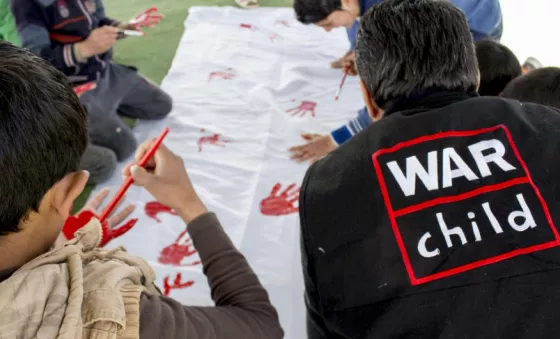There's lots of misinformation out there about child soldiers. We want to set the record straight on 5 of the most common myths and misconceptions.
Myth #1 - "Child soldiers are used as fighters."
Not all are used as soldiers. They can also be used as porters, cooks, messengers, spies or for sexual purposes.
The term "child soldier" isn't very accurate. It conjures up images of children in uniforms fighting with guns. Instead it's more accurate to define them as "children associated with armed forces and armed groups" (CAAFAGs).
It's important to recognise that children do not have to take part directly in hostilities to be severely affected by them.
Myth #2 - "Child soldiers are all African."
There is a misconception that CAAFAGs are all in Africa. Whilst it is a serious issue in many African nations, it is a worldwide problem.
In 2016, the UN estimated that there were 20 conflict situations around the world involving children in armed groups, including Myanmar, Central African Republic, Colombia, and Afghanistan. The use of children by armed forces and groups is one of the worst violations in war across the globe. It's also one of the six grave violations.
Myth #3 - "Child soldiers are all boys."
Girls are also recruited or forced into armed groups and it's estimated that up to 30-40% of CAAFAGs are girls. Like boys, girls are often used for combat.
They are also especially vulnerable to sexual exploitation, and are often forced into early marriage and sexual slavery (it should be noted that boys are also a target of sexual abuse in many countries).
Myth #4 - "Child soldiers are abducted into armed groups."
In many famous cases this is absolutely true. For example, The Lord's Resistance Army and ISIS are kidnapping or using force to recruit children. But there are also many "volunteer" recruitments into armed groups.
Some children are indoctrinated and others are lured in by promises of education, security, money and status. Having no access to school, employment or even food are just some of the reasons that leave children no other choice but to join.
These are called "push and pull factors". We did more research on that earlier this year.
But making a distinction between forced and voluntary recruitment is difficult, because the lines are often blurred.
Myth #5 - "It's easy for released child soldiers to continue with their childhood."
The risks to children in armed groups are huge. Even if they're released or escape, the after-effects can last a lifetime.
Children can face stigma, exclusion and the consequences of their traumatic experience. They may find their families have been killed in conflict—or sometimes they are rejected by their own communities.
War Child works to tackle this stigma and exclusion. Our child-friendly spaces have dedicated areas for listening sessions where children can share any distress, worry or trauma they are going through. If needed, we refer them to specialist services to provide further support.
We also work closely with families and communities to make sure they are equipped to reintegrate children back into day-to-day life.
Learn more about our work with children formerly associated with armed groups.

